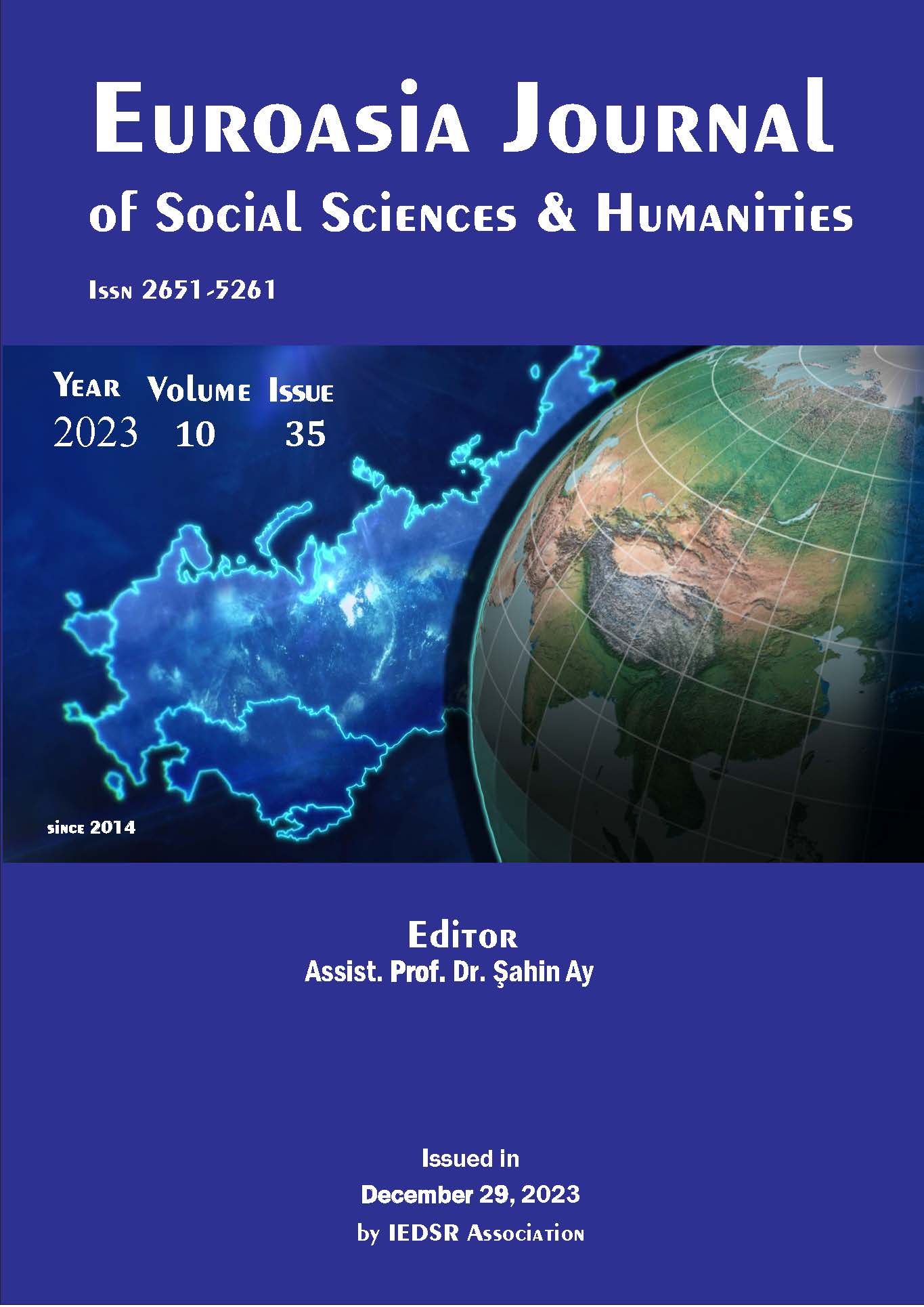Dear Cheeky Death Mask
DOI:
https://doi.org/10.5281/zenodo.10442947Keywords:
Mask, Self, Persona, Virtual Reality WorldAbstract
I wonder how the necessity of masking oneself in the modern times of the 21st century can be evaluated apart from the fear of death (covid-19). non-existence, acceptance
out of fear of not being able to see? What can be said about the intellectual foundations of this sociological phenomenon that upsets the boundaries between reality and fiction? In the Ancient Roman Theater, actors used masks called persona. Persona is used to mean person, personality, character. The mask worn on the face on the stage turns into the voice of the self portrayed by the actor. It turns into the character that the player wants in his hand. It hides the real self in front of the audience. Just like in modern times (social media, virtual world), the self is hidden under the mask and shows itself in the form it can transform. As Mevlana said, "Either be as you appear or appear as you are." Mevlana explained the complexity in a very plain language. Whether you wear a good or bad mask, the self behind all masks is fake. What is real is our self standing in the sun.
When we look at the historical development of personality, according to Eric From, our self is the transformation of our social activities into life experiences through socialization. What did people hope for in the age of uncertainty, when the self is tried to be integrated again?.. one of the masks that are the face of metaphorical expression in the relationship he establishes with life...
As the phenomenon of the mask is on the wanted list of mythologies from past to present, it seems that it will continue to write its own history by adding new meanings to the fragmentation of the self of modern times and bringing new personas (in our lives as forms of communication). Here is the adventure of being a part of the story of the personas who put their masks through this article..
In this article, the codes of the emergence of the mask, which serves to convey the message, as a form (the face of the desired identity) and positioning it in an indispensable place as a communication tool, are tried to be analyzed in this article.
Downloads
References
Michel Foucault, “Practicing Criticism”, Michel Foucault: Politics, Philosophy, Culture: Interviews and Other Writings 1977-1984, ed. Lawrence D. Kritzman (New York: Routledge 1990), 154-155.
NUNLEY, John W., Mccarty Cara: Masks Faces of Culture, The Saint Louis Art Museum, by Harry N. Abrams, Incorporated, New York, 1999.
Nietzsche, Friedrich. İyinin ve Kötünün Ötesinde, (Bir Gelecek Felsefesini Açış). çev. Ahmet İnam. İstanbul: Yorum Yayınları, 2001.
GÜNER, Y,. (2006). “Dünya Maske Geleneklerine İfadeye Katkıları Açısından Bir Bakış”, (Yayınlanmış Sanatta Yeterlik Eser Metni). Mimar Sinan Güzel Sanatlar Üniversitesi: Sosyal Bilimler Enstitüsü
JUNG, C. G., (2006). “Analitik Psikoloji”, çev. E. Gürol, İstanbul: Payel Yayınevi.
GOMBRİCH, E.H: Sanatın Öyküsü, Çevirenler: Erol Erduran, Ömer Erduran, Remzi Kitabevi, 2007.
Hakan Gündoğdu, “Foucaultcu Eleştiri Nasıl Anlaşılmalı”, Kaygı 21 (Güz 2013), 43. Fordham, Frieda. 2011. JUNG Psikolojisinin Ana Hatları, çev. Aslan Yalçıner, Say Yayınları.
YASAN, M,. (2011). “Maske, Maskede İfade ve Sinemada Maske Kullanımı” (Yayımlanmış Yüksek Lisans Tezi). İstanbul Üniversitesi: Sosyal Bilimler Enstitüsü
Ekmekçioğlu, N. (2014). Commedia Dell'arte Geleneğinde Kılık Değiştirme Motifi ve Maskenin Dramatik İşlevi. K. Karaboğa, & O. Arıcı (Dü) içinde, Maske Kitabı (s. 63-71). İstanbul: Habitus Yayınları.
Ortega Y.GASSET ,İnsan ve Herkes, Metis yayınları, 2019.
Downloads
Published
How to Cite
Issue
Section
License
Copyright (c) 2023 EUROASIA JOURNAL OF SOCIAL SCIENCES & HUMANITIES

This work is licensed under a Creative Commons Attribution-NonCommercial 4.0 International License.

